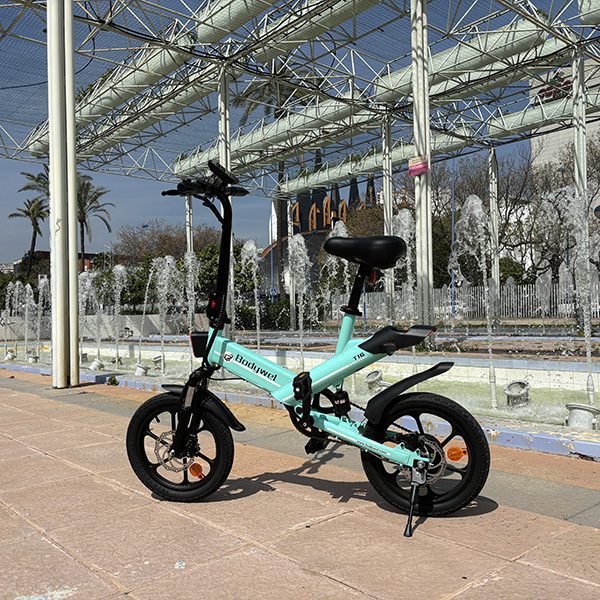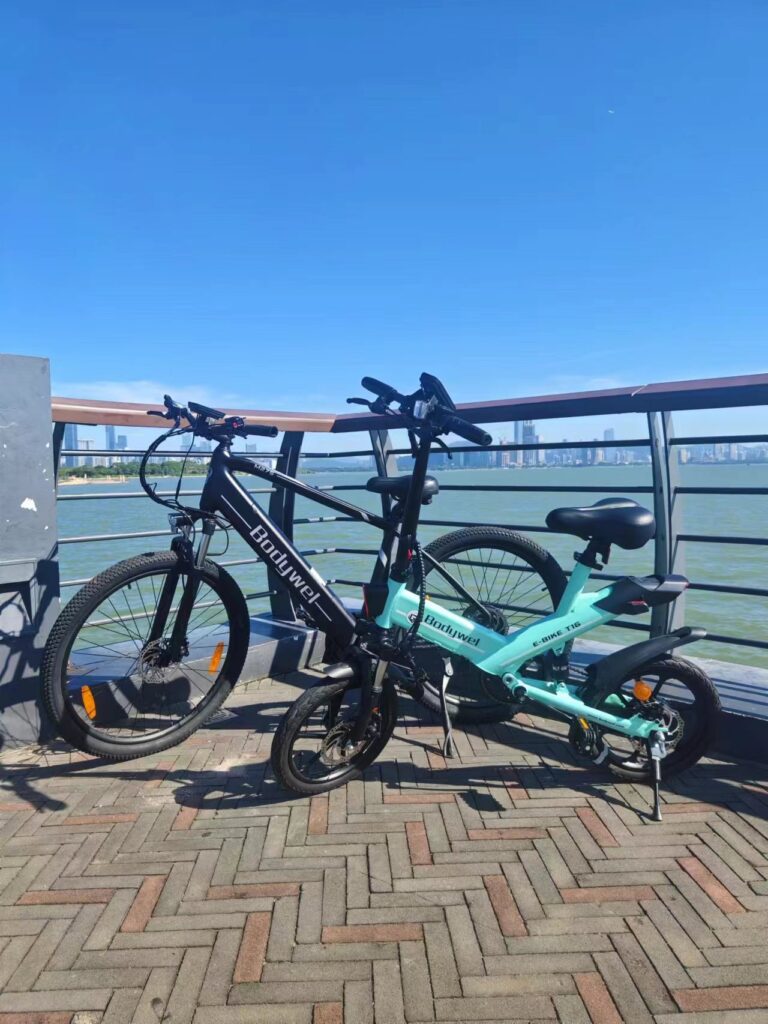Choosing between a full suspension and a hardtail mountain bike can greatly impact your biking experience. Our guide is here to help you navigate the full suspension versus hardtail debate ,providing information to assist you in selecting the most suitable bike for your requirements. This comprehensive guide aids in discovering the bike for trail riding ,considering both its performance capabilities and comfort levels. Whether you are a professional rider or new to mountain biking ,selecting the right bike is pivotal ,as it influences your overall cycling journey. Let us assist you in finding a bike that aligns with your spirit and riding preferences.
Understanding Bike Suspension Types
Bicycle suspension setups play a key role in mountain biking ,impacting your control ,comfort and ability to navigate different types of terrains. This segment delves into the features of both full suspension and hardtail mountain bikes ,while also drawing comparisons between suspension and front suspension options.
Defining Full Suspension Bikes
Full suspension bicycles feature shocks in both the front and rear. This configuration aids in dampening impacts from all directions ,resulting in an more controlled experience when riding on challenging uneven terrains. For trail enthusiasts ,this component is considered essential for a comfortable riding experience.
Exploring Hardtail Mountain Bikes
Hardtail mountain bikes feature a stiff rear frame and front fork suspension only. They require less upkeep and efficiently transfer pedaling power to the ground , making them ideal for country rides and novice riders.
Comparing Dual Suspension and Front Suspension
When deciding between dual suspension and front suspension only ,it all comes down to what matters most to you. Dual suspension bikes excel in providing comfort and control on challenging trails ,while front suspension bikes offer a direct ride and are ideal for smoother terrains. Understanding these distinctions can assist cyclists in selecting the right bike suspension type for their needs.

The Terrain Factor: How It Influences Your Bike Choice
Picking the right mountain bike is crucial for your escapades. Whether you’re cruising along paths or navigating challenging downhill tracks ,your choice of bike makes a difference. This manual will outline how various terrains call for different bikes ,aiding you in discovering the best companion for your journeys.
Trail Riding vs. Downhill: Suitability for Each Bike Type
Riding on trails and downhill paths present challenges. If you’re just starting out ,it’s ideal to use a bike that’s equipped for smooth riding and handling rough terrains. Full suspension bikes work well in these situations. On the other hand ,when it comes to biking downhill ,you’ll need a bike with powerful brakes durable frames and robust suspension to tackle quick and steep descents effectively.
Off-Road Biking Differences for Full Suspension and Hardtail
It really comes down to the type of terrain you’re riding on when deciding between a full suspension bike and a hardtail one. Full suspension bikes excel on tough and uneven trails as they handle shocks effectively. On the other hand ,hardtail bikes are lighter and more efficient at transferring power ,making them ideal for smoother trails.
Riding Comfort: Full Suspension Benefits and Hardtail Advantages
When it comes to cycling ,riders have the option to choose between bikes equipped with full suspension or a hardtail ,for having an riding adventure more comfortable and more fun.
For riding off road ,full suspension bikes really stand out. With suspension in both the front and back ,they excel at absorbing bumps for a ride. This feature also enhances control and stability on challenging trails.
Hardtail bikes have the benefit of being lighter , since they lack rear suspension , making them faster and more maneuverable . Cyclists who prioritize speed and agility tend to opt for hardtails for these reasons. Additionally ,they require less maintenance , resulting in fewer issues while out riding.
| Feature | Full Suspension | Hardtail |
| Weight | Heavier, due to additional suspension components | Lighter, lacks rear suspension |
| Maintenance | Requires more due to complexity | Simpler, resulting in less frequent maintenance |
| Performance on Rough Terrain | Higher comfort and control | Less shock absorption but greater direct trail feel |
| Cost | Generally more expensive | More budget-friendly options available |
Knowing the capabilities of bicycles is crucial for riders when selecting the right one. Whether you fancy the smooth journey of a full suspension bike ,or the velocity provided by a hardtail ,each style boasts its benefits for mountain biking.
Full Suspension vs Hardtail: Which Is Better for Trail Riding?
The argument over whether full suspension or hardtail mountain bikes are better for trail riding is intense. Each kind has its advantages ,depending on the trails and your riding style. Let’s examine both to determine which suits riding different styles and preferences effectively.
Trail Riding Performance Analysis
Full suspension bicycles excel on challenging trails as they absorb impacts from the tough terrains and frontal collisions, making them ideal for tough terrains. On the other hand hardtail bikes equipped with front suspension only are lighter and quicker on even trails, catering to individuals seeking speed and straightforward upkeep.
Trail Riding Preferences: Personal Considerations
When choosing between a full suspension and a hardtail bike ,it’s important to think about what you like and how you ride. Your skill level ,the kind of trails you usually go on and how fit you are should all be part of your decision. People who are new to biking often go for full suspension bikes ,because they feel safer and more comfortable ,while those who have been riding for a while might like hardtails for control and efficiency especially on trails they know well.
Mountain Bike Performance: Full Suspension and Hardtail Pros and Cons
Selecting the right mountain bike plays a key role in enhancing your riding experience. This segment delves into the advantages of full suspension and hardtail bicycles , offering a comparison of their performance to assist you in making a wise decision.
Benefits of Full Suspension in Challenging Terrains
Riding on trails becomes a lot smoother with full suspension bikes. These bicycles are fitted with shocks in both the front and back ,which aid in absorbing bumps along paths or drops ,offering a smoother and more comfortable ride.
It also aids in maintaining tire contact with the ground ,resulting in better grip and control. According to our research ,full suspension bicycles offer a smoother ride on trails ,boosting riders confidence and performance.
Hardtail Benefits: When Simplicity Meets Efficiency
Hardtail bikes have frames that lack rear suspension ,making them lighter and simpler in design. This characteristic not only makes maintenance easier ,but also more budget friendly to use. They are particularly ideal for off road trails.
Hardtail bikes are fantastic for riders who appreciate a straightforward biking adventure. They enable you to put more energy to the wheel making them an excellent option no matter you are a newcomer ,or just appreciate a simple biking approach.
| Feature | Full Suspension | Hardtail |
| Terrain Suitability | Best for rough, technical terrains | Optimal for smooth, less challenging trails |
| Weight | Heavier due to extra components | Lighter, promoting ease of maneuverability |
| Complexity | Higher, requires more maintenance | Simpler, easier to maintain |
| Cost | Generally more expensive | More budget-friendly |
| Performance Difference | Higher comfort and control on descents | Enhanced pedaling efficiency on ascents and flat terrain |

Bike Buying Guide: Understanding Full Suspension and Hardtail Frame Designs
When looking for the best mountain bike frame ,it’s crucial to grasp the variances between full suspension and hardtail models. This section delves into the traits of each category ,including the materials and attributes to mountain biking. It discusses how these elements influence riders enjoyment taking into account factors related to bike frames.
Full suspension bikes come with a rear shock that boosts comfort and grip on tough ,trails making them great for rugged terrains and downhill rides. On the other hand ,hardtail bicycles are popular for their lighter build and faster speed when climbing and riding on smooth surfaces. If you’re seeking a versatile choice ,the sturdy rear section and quick response of hardtails shine on not so bumpy terrains.
| Feature | Full Suspension | Hardtail |
| Frame Complexity | More complex with moving parts | Simpler and often lighter |
| Performance on Rough Terrain | Higher performance, better shock absorption | Less traction but more direct transfer of power |
| Ideal Use | Mountain and downhill biking | Cross country and trail riding |
| Typical Weight | Heavier due to additional components | Lighter, offering swifter uphill travel |
Picking the right material for your bike frame is vital. Aluminum is well liked for its durability and weightlessness. Carbon fiber ,found in top tier models ,creates a bike that’s extremely lightweight and rigid ,enhancing both speed and comfort. The continuous advancements in mountain biking technology are constantly pushing the boundaries of full suspension and hardtail frames. It’s essential for purchasers to stay updated on these developments.
- Look at the frame’s weight and material for your biking needs.
- Think about the suspension type that suits the trails you’ll ride.
- Check out the latest tech in suspension and frame design for better riding.
Deciding between a suspension and hardtail bike relies on how you ride ,the type of terrain you tackle and your comfort preferences. Thanks to advancements in mountain biking tech ,there’s an wide array of choices available now. Cyclists can select a bike that suits their thrill seeking and performance objectives.
Future of Trail Riding: Impact of MTB Technology on Bike Suspension
The realm of mountain biking is progressing with advancements in full suspension and hardtail mountain bikes ,altering the thrill of trail riding. These improvements strive to elevate the enjoyment of off road cycling for riders of all proficiency levels.
Exploring the Advances in Full Suspension Bikes
Full suspension bikes are well known for their knack for delivering both comfort and top tier performance on tough trails. The latest developments in mountain biking tech have taken their capabilities up a notch. By incorporating suspension systems ,these bicycles are now able to adapt to terrains ,providing riders of all skill levels with improved comfort and stability.
Hardtail Mountain Bikes: Current Trends and Technological Innovations
Mountain bikes without rear suspension have also undergone enhancements. They now incorporate materials that boost their durability, speed and maneuverability. Enhanced brakes and tires contribute to better control and overall performance on tough trails. These progressions maintain the competitiveness of bikes, in the evolving realm of trail riding upgrades.
The outlook for mountain biking appears promising ,with advancements in mountain biking technology. The focus is on integrating technology with the desires of riders ,enhancing the thrill of trail riding for all mountain biking enthusiasts.

Best Mountain Bike Options from Bodywel
Bodywel has some top-notch mountain bikes for off-road adventures. They offer Bodywel e-bike products known for their cutting-edge tech and durability. Plus, they have dual suspension bicycles made for tough terrains. There’s a bike for every kind of cyclist.
Bodywel’s full suspension bikes are designed for challenging terrains ,offering an controlled ride on tough trails. Ideal for thrill seekers ,these bicycles feature advanced suspension systems that enhance the riding experience.
Bodywel’s hardtail mountain bike caters to riders seeking an agile biking experience. While it may not absorb shocks effectively as full suspension bikes ,it excels on straightforward trails ,providing a balance of speed and performance.
| Feature | Bodywel Full Suspension Bike | Bodywel Hardtail Mountain Bike |
| Suspension Type | Front and Rear | Front Only |
| Ideal Terrain | Rugged, Uneven Surfaces | Flat to Moderate Trails |
| Weight | Heavier Build for Stability | Lighter for Speed and Agility |
| Best Used For | Extreme Off-road Cyclists | Cross-country and Casual Riders |
In summary ,whether you enjoy rugged off road trails or leisurely rides ,Bodywel offers a wide range of top notch mountain bikes to suit your needs. Exploring their selection of e bikes can assist you in discovering the bike for your escapades.
Conclusion
Deciding between a full suspension bike and a hardtail goes beyond preference. It involves considering the terrain and aligning it with your riding approach. This examination covers the aspects to factor in when selecting your mountain bike.
Consider the kind of trails you plan to ride. Are you into tracks ,or rugged rocky terrain? Choosing the right bike suspension can significantly impact your experience. It’s all about selecting the fit for your escapades.
Ultimately the ideal bike is the one that suits your needs and matches the terrain you enjoy riding on. Consider your preferences for your journey. Make a thoughtful decision. Wishing you an fulfilling experience on your ride.
FAQ
What are the main differences between full suspension and hardtail mountain bikes?
Full suspension bikes have both front and rear suspensions. This helps them handle rough terrains better, giving you more control and traction. Hardtail bikes only have front suspension. They are lighter and better for smooth trails and climbing.
How does bike suspension type affect performance on different terrains?
Full suspension bikes are great for tough and technical trails. They absorb shocks well. Hardtails are better for smoother trails. They focus on power and efficiency.
What are the advantages of choosing a full suspension bike?
Full suspension bikes make rides more comfortable. They improve traction and handling on tough descents. They also reduce fatigue on long, rough rides.
Why might someone choose a hardtail bike over a full suspension bike?
Riders might pick hardtails for their light weight and quick response. They also need less maintenance and perform well on climbs and moderate trails.
Are full suspension bikes better for trail riding?
It depends on the trail. Full suspension bikes excel on rocky, technical trails with drops and jumps. But for smoother trails or climbing, hardtails might be better.
What should I consider when choosing between a full suspension and a hardtail mountain bike?
Think about the trails you’ll ride, your riding style, and what you value most. Consider your experience level and whether you want control or efficiency.
What kind of maintenance does a full suspension bike require compared to a hardtail?
Full suspension bikes need more upkeep because they have more parts like the rear shock. Hardtails are simpler and need less maintenance.
As a beginner, should I start with a full suspension or a hardtail mountain bike?
Beginners often start with hardtails because they’re cheaper and teach basic skills. But if you’ll ride rough trails a lot, a full suspension bike could be a good choice.


